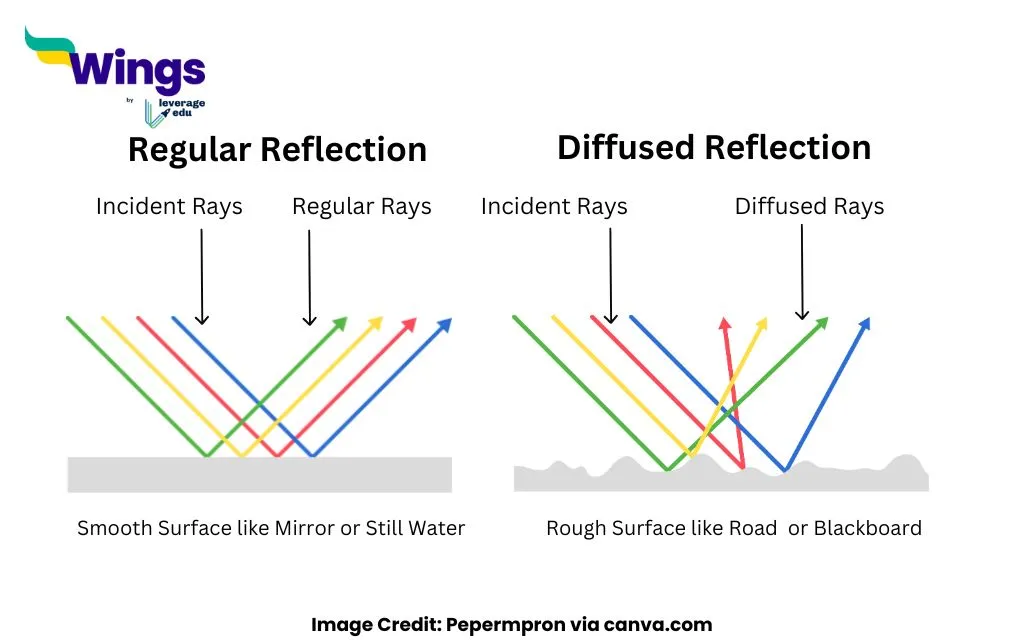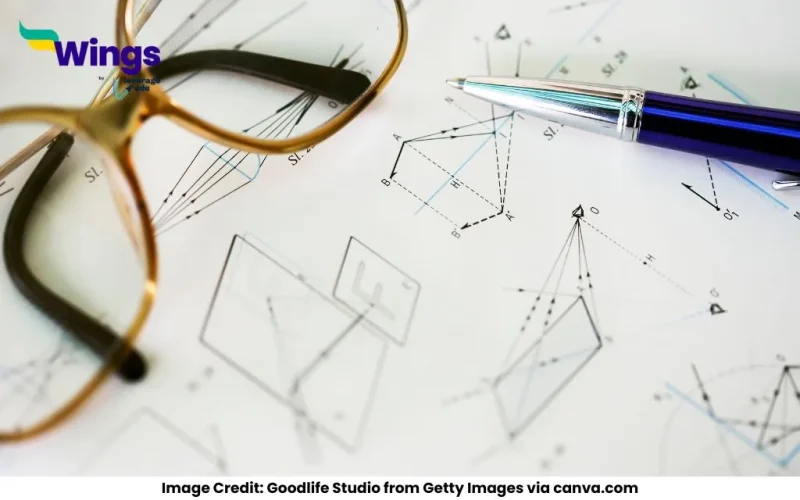Regular reflection occurs on smooth surfaces, producing clear, well-defined images, as parallel rays reflect uniformly. Diffused reflection occurs on rough surfaces, scattering light rays in various directions, and preventing image formation.
Diffused reflection doesn’t violate the laws of reflection; each ray still follows the law, but the uneven surface causes varied angles of incidence and reflection.
Complete Answer:
We can differentiate between regular and diffused reflection in the following manner:
| Regular Reflection | Diffused Reflection |
| Occurs on smooth, polished surfaces (e.g., mirrors). | Occurs on rough, irregular surfaces (e.g., walls). |
| Parallel rays remain parallel after reflection. | Parallel rays scatter in different directions. |
| Produces clear, well-defined images. | Does not produce any clear images. |
| Angle of incidence equals the angle of reflection for all rays. Thus, Laws of reflection are strictly obeyed. | Each ray follows the law of reflection, but angles vary due to surface irregularities. Therefore, Laws of reflection are obeyed at each point on the surface, but the overall effect is diffused |
| Example: Reflection from a plane mirror or still water. | Example: Reflection from a piece of paper or road surface. |

Does Diffused Reflection mean the Failure of the Laws of Reflection?
No, diffused reflection does not mean the failure of the laws of reflection. The laws of reflection are always valid, whether the reflection is regular or diffused. Here are the reasons:
- Laws of Reflection:
- The angle of incidence is equal to the angle of reflection.
- The incident ray, reflected ray, and normal all lie in the same plane.
- Regular Reflection:
- Happens on smooth surfaces like a mirror.
- The reflected rays are parallel, and the reflection forms a clear image.
- Diffused Reflection:
- Happens on rough or uneven surfaces.
- Each individual ray still follows the laws of reflection, but the irregularities of the surface scatter the rays in many directions.
- This scattering makes the reflection appear blurry or scattered, without forming a clear image.
Example:
When light hits a smooth surface (like a mirror), the reflected rays are organized, and you see a clear image. But when light hits a rough surface (like paper), the reflected rays go in different directions because the surface irregularities cause the normal at each point to vary.
Thus, the laws of reflection hold true for every individual ray, even if the overall effect appears scattered.
Bonus- Important Concepts on Reflection
Here are some concepts on reflection for Class 12 students based on the NCERT syllabus, essential to understanding how to differentiate between regular and diffused reflection:
1. Laws of Reflection: The angle of incidence (i) is always equal to the angle of reflection (r). The incident ray, the reflected ray, and the normal to the surface all lie in the same plane.
2. Types of Reflection: There are two types of reflection: Regular Reflection: Occurs on smooth, polished surfaces; produces clear images and Diffused Reflection: Occurs on rough surfaces; no clear image is formed.
3. Total Internal Reflection (TIR): It occurs when light passes from a denser medium to a rarer medium and the angle of incidence exceeds the critical angle. Common applications of TIR are:
- Optical fibers.
- Mirage formation
Common Physics Questions:
 60,000+ students trusted us with their dreams. Take the first step today!
60,000+ students trusted us with their dreams. Take the first step today!


 One app for all your study abroad needs
One app for all your study abroad needs










